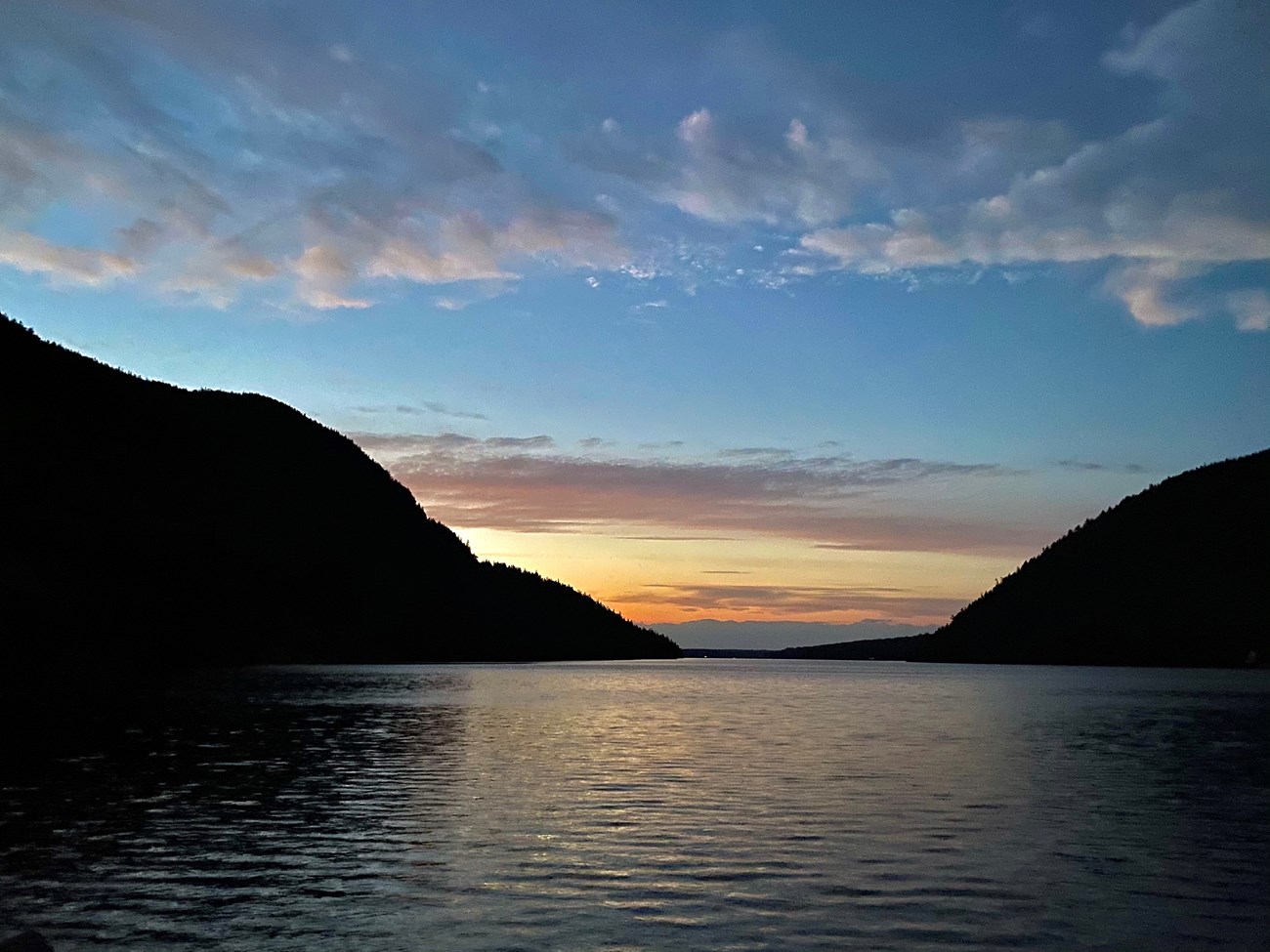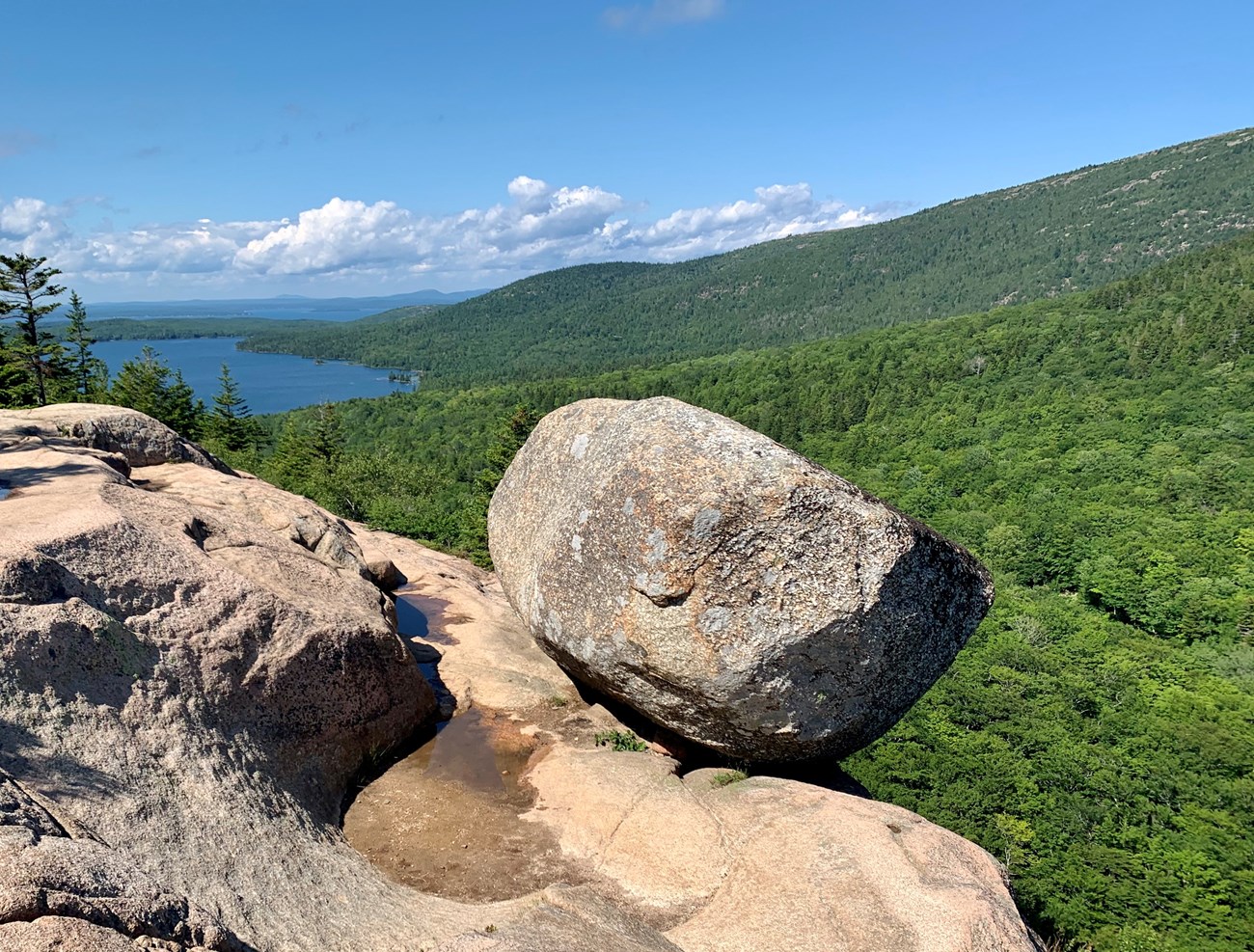Last updated: October 17, 2020
Article
Virtual Activity: Geology and Art

NPS Photo/Mariah Reading
Acadia National Park was sculpted by a glacier thousands of years ago. There is visual evidence of this process all around Mount Desert Island. This evidence takes the form of our granite mountains, steep cliffs, and deeply carved lakes.
A glacier is a slowly moving mass of compacted ice formed by the accumulation of snow. Most recently, the pressure, friction, and force of the Wisconsin Glaciation carved the dynamic landscape of Acadia.
Follow along with the steps that the glacier took and draw, paint, write, or respond how you think Acadia’s landscape has transformed over geologic time. When exploring throughout Acadia, see if you can identify any of the glacial land features in the photos.
|

Photo courtesy of Mariah Reading. Used with permission.
|

NPS Photo/Kylie Caesar
|

Photo by Ashley L. Conti, Friends of Acadia, NPS
|

NPS Photo/Victoria Stauffenberg
|
Art plays an important role in interpreting the glacial and entire geologic past. It is a way we can relate to and imagine events that happened thousands and millions of years ago. By creating your own art in Acadia, you are contributing to a legacy of science and understanding.
